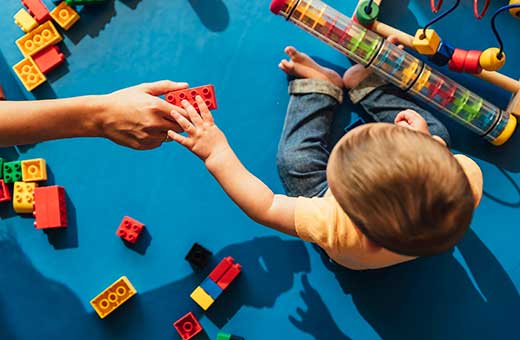The world has changed dramatically in a short period of time. Technological advances will continue to reshape our world in ways that we could never have imagined. Our children represent the first generation of children that have access to as much if not more knowledge than the parents. Therefore, we need to prepare our children for a future that is filled with unknowns. This means that how we teach our children needs to change. We need to cultivate creativity and problem solving skills. Children need to ‘learn how to learn’ and develop a ‘love of learning’.
The Reggio approach provides an interesting solution to modern day education dilemmas. In its most basic form, it is a way of observing what children know, are curious about and what challenges them, and using those observations to engage the children in learning.
A young and inspirational teacher/educational psychologist, Loris Malaguzzi, founded the Reggio Emilia approach more than 50 years ago. He came upon a Northern Italian town where the citizens, at the urging of the women, were rebuilding a school from the rubble so that families could get back to normalcy after World War II. He was so inspired by their grit and determination that he partnered with them, pioneering the Reggio approach.
This approach is at the heart of the new changes implemented by the Ministry of Education for preschool and primary programs outlined in the “How Does Learning Happen” publication. It is also referred to as ‘emergent curriculum’ or ‘inquiry-based learning’.
Reggio Inspired Learning – Cultivating a Love of Learning
-
- Children are able to shape their own learning. A child is strong, capable and resilient. They are motivated by their own interests to understand and learn more. They are listened to with respect. Rather than the child asking a question and the adult offering the answers, the child and adult are co-learners, with the adult asking open-ended questions.
- Children develop an understanding of themselves and where they fit in the world through interactions with others. Working in groups, where each child is equal, having their thoughts and questions valued is a key focus.
- The environment as the third teacher. The environment has the ability to inspire children. An environment filled with natural light, beauty, order and open spaces free from clutter, provide an ideal space for creating and learning.
- The educator as a guide. The educator’s role is to observe children, listen to their questions and their stories, find what interests them and give them opportunities for project work. The projects aren’t planned in advance, they emerge from the child’s interests.
- Relationships within the community. In the Reggio approach, the children realize that they are responsible members of society. The learning experiences at the centre are created to respect each child’s individual rights and to give them the opportunities to be respectful and have specific roles to carry out.
- An emphasis on documenting children’s thoughts. There is an emphasis on carefully displaying and documenting children’s thoughts and progression of thinking: photographs, transcripts of children’s thoughts and explanations, drawings, sculptures etc., all designed to show the child’s learning process.
- The Hundred Languages of Children. The Reggio Emilia approach believes that children use many different ways to show their understanding and express their thoughts and creativity. Learning and play are not separated. This approach emphasizes the use of all the children’s senses and all their languages in order to learn.
Newsweek has named the Reggio Emilia schools of Italy as one of the 10 best in world. Google, arguably one of the most successful companies of all time, provides their employees with Reggio inspired childcare centres in their corporate offices. They may be onto something.

